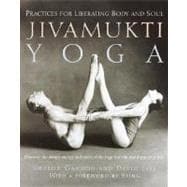
Note: Supplemental materials are not guaranteed with Rental or Used book purchases.
Purchase Benefits
What is included with this book?
| Foreword by Sting | xi | ||||
| Introduction Putting It All Together | xv | ||||
| Part 1 What Is Yoga? | |||||
|
3 | (4) | |||
|
7 | (14) | |||
|
21 | (18) | |||
|
39 | (16) | |||
|
55 | (14) | |||
|
69 | (30) | |||
| Part 2 Outer Practices That May Lead to Yoga | |||||
|
95 | (4) | |||
|
99 | (26) | |||
|
125 | (18) | |||
|
143 | (38) | |||
|
181 | (18) | |||
| Part 3 Inner Practices That May Lead to Yoga | |||||
|
195 | (4) | |||
|
199 | (18) | |||
|
217 | (14) | |||
|
231 | (14) | |||
| Appendix I Asana Charts | 245 | (10) | |||
| Appendix II Recommended Resources to Read, Listen to, and View | 255 | (6) | |||
| Notes | 261 | (6) | |||
| Glossary | 267 | (18) | |||
| Acknowledgments | 285 | (4) | |||
| Index | 289 |
The New copy of this book will include any supplemental materials advertised. Please check the title of the book to determine if it should include any access cards, study guides, lab manuals, CDs, etc.
The Used, Rental and eBook copies of this book are not guaranteed to include any supplemental materials. Typically, only the book itself is included. This is true even if the title states it includes any access cards, study guides, lab manuals, CDs, etc.
Excerpted from Jivamukti Yoga: Practices for Liberating Body and Soul by David Life, Sharon Gannon
All rights reserved by the original copyright owners. Excerpts are provided for display purposes only and may not be reproduced, reprinted or distributed without the written permission of the publisher.